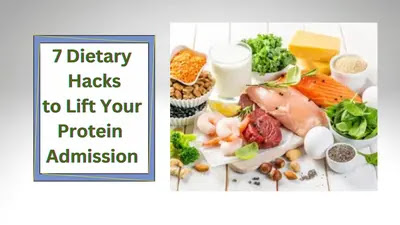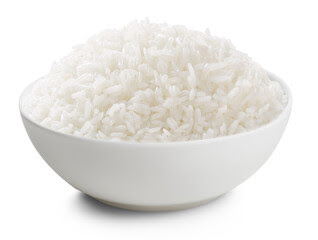7 Dietary Hacks to Boost Your Protein Intake 🍳💪
Protein is one of the most mind-blowing food varieties to devour for muscle recuperation, development, and strength. The typical grown-up ought to eat no less than 0.8 to 1 gram of protein for every kilogram of body weight (PDF). For instance, if you weigh 150 pounds (68 kilograms), you ought to hold back nothing to 68 grams of protein each day. One of the simplest ways of ensuring you're raising a ruckus around town is to separate your expected measure of protein by the number of dinners you eat day to day. Like that, you know how much protein every feast ought to incorporate.
Dynamic individuals, who lift loads, contend in sports, or have relentless positions might find it benefits them to eat more protein than the suggested least. More established grown-ups, particularly those in danger of sarcopenia (age-related muscle misfortune) can likewise profit from eating more protein. To work out how much protein you really want, attempt this dietary reference consumption number cruncher from the US Division of Horticulture. CNET's visual aid additionally shows you what 100 grams of protein resembles.
The number of grams of protein you need to eat consistently can appear to be overwhelming, yet having the right procedure and understanding can make this feasible. The following are seven straightforward systems to expand the grams of protein you eat every day.
1. Make protein a custom
The "consistency is critical" aphorism has become widespread counsel since it's valid and relevant for pretty much any propensity you need to begin and keep - - or any propensity you need to stop.
Ritualizing things - - or joining one activity to another activity - - can assist with consistency, which in the long run prompts propensities. For instance, assuming you're attempting to get more strides in each day, you could say, "I'll stroll for 10 minutes after breakfast, lunch, and supper every day." Blast - - that is an additional 30 minutes of strolling consistently.
Take a stab at ritualizing protein in that sense. Perhaps you drink milk with breakfast each day, or maybe drink a protein shake all things considered, and afterward, protein turns out to be essential for your morning meal custom. With 20 to 40 grams of protein, a day-to-day protein shake can rapidly up your general protein consumption.
You can likewise ritualize protein by drinking a post-exercise shake. This might seem like presence of mind, yet trust me, it's not difficult to fail to remember your post-exercise drink on the off chance that you say, "Eh, I'll drink it after supper or after I shower." Feel free to make it when your exercise is finished; drink it during your post-exercise stretches or cool down and it'll turn into a custom.
2. Eat your protein first
At this point when you eat dinners with protein sources, take a stab at eating the heft of the protein before moving on to the other food sources on your plate, particularly grains, which can top you off quick. Eating your protein source initially guarantees you'll eat everything before you get excessively full.
A special reward: Protein can cause you to feel more full, so in the event that you're attempting to get thinner, eating satisfactory protein can assist you with arriving at your well-being objectives.
3. Top food sources with cleaved nuts
Nuts aren't really the best wellspring of protein by volume, yet adding them to your feast over the day can give you a pleasant protein help.
Take a stab at adding hacked pecans (4.3 grams of protein per serving) to plates of mixed greens, slashed peanuts (6.7 grams per serving or almonds (six grams for each serving) to cereal and cleaved cashews (5.2 grams per) blending fries.
Notwithstanding their protein content, nuts likewise contain loads of solid fats, fiber, nutrients, and minerals, so you'll help your well-being in all viewpoints by adding nuts to dinners.
4. Pick more slender meats
Less fatty meats have less fat per segment, and that implies they have more lean meat, along these lines more protein, per segment. This is one really simple method for adding more protein to your day-to-day consumption assuming you eat creature proteins consistently.
More streamlined meats have fewer calories than fattier meats and protein initiates satiety, so this is a decent strategy for any individual who's attempting to get in shape. As indicated by the Mayo Facility, the least fatty cuts of hamburger are:
- Top sirloin steak
- Top-round meal and steak
- Base round meal and steak
- Eye of Round meal and steak
- Sirloin tip side steak
If you're going for poultry, a decent guideline is to pick white meat over dim meat. What's more, for pork, Mayo Center says the most slender cuts of pork are tenderloin, flank hack, and leg.
5. Pick earthy-colored rice or quinoa over white rice
This is one simple trade you can utilize frequently to get more protein in your eating regimen. Both quinoa and brown rice have more protein per serving than white rice and can supplant white rice in many feasts.
The surface is comparative, even though quinoa has a more natural taste than rice. Each serving of cooked quinoa packs 8 grams of protein for every cup, while earthy-colored rice contains 5.3 grams per cup - - of white rice, then again, contains simply 4.4 grams of protein per cup.
Quinoa outperforms both white and earthy-colored rice regarding protein, however colored rice actually offers more protein than white rice and is a decent decision on the off chance that you despise quinoa.
6. Add beans to anything
Beans are a frequently neglected and undervalued protein source. They're so natural to add to servings of mixed greens, pasta, tacos, and numerous different dishes and, contingent upon the kind of bean, can amount to 10 grams of protein for every half-cup.
This isn't tremendously contrasted with creature wellsprings of protein like poultry and eggs, however adding beans to dinners can fill a few holes in your everyday protein consumption. Furthermore, beans are an incredible wellspring of fiber and are different.

7. Trade white bread for entire grain
Bread is an honest spot to up your protein admission, however, a few breads really pack a remarkable protein punch: Very much like earthy colored rice has more protein than white rice, entire grain bread has more protein than white bread.
This is on the grounds that entire grain food varieties keep all pieces of the grain - - the microbe, the wheat, and the endosperm - - while the refining system strips grains down to only the endosperm, which doesn't contain numerous supplements.
Dave's Executioner Bread 21 Entire Seeds and Grains, for example, contains five grams of protein for each cut. Assuming you have two cuts for breakfast, that is a programmed 10 grams of protein that you wouldn't get with refined white bread.
The data contained in this article is for instructive and educational purposes just and isn't expected as well-being or clinical exhortation. Continuously counsel a doctor or other qualified well-being supplier concerning any inquiries you might have about an ailment or well-being targets.
- What are simple ways to incorporate high-protein snacks into a daily diet?
- How can plant-based sources effectively boost protein intake for vegetarians or vegans?
- What role do protein powders play in meeting daily protein goals, and how should they be used?
- How can meal prep strategies help in consistently including protein-rich foods in meals?
- What are some creative ways to enhance the protein content of common dishes, like soups or salads?
Anthropometric measurements in children
Weight and length measurement in infants:
Introduction to Anthropometric Measurements:
Anthropometric indices for adults:
Anthropometric indices for children:









.png)



1 Comments
Great
ReplyDeleteplease do not enter spam link in the comment box.